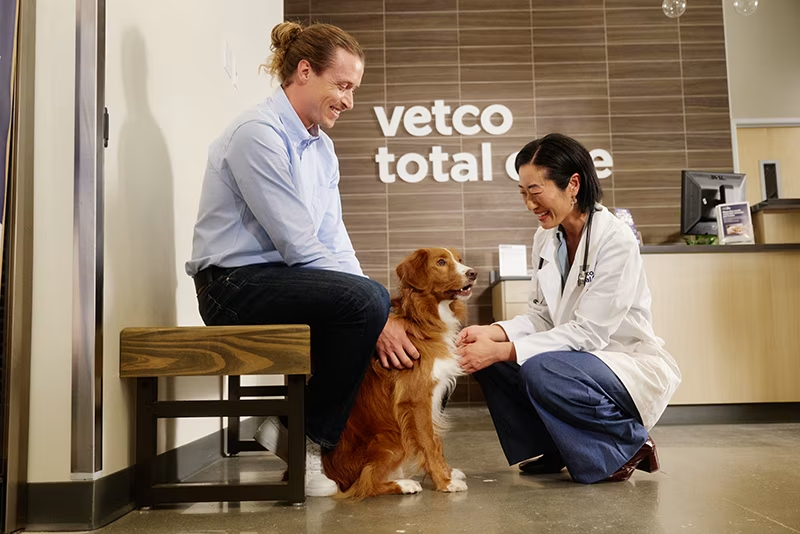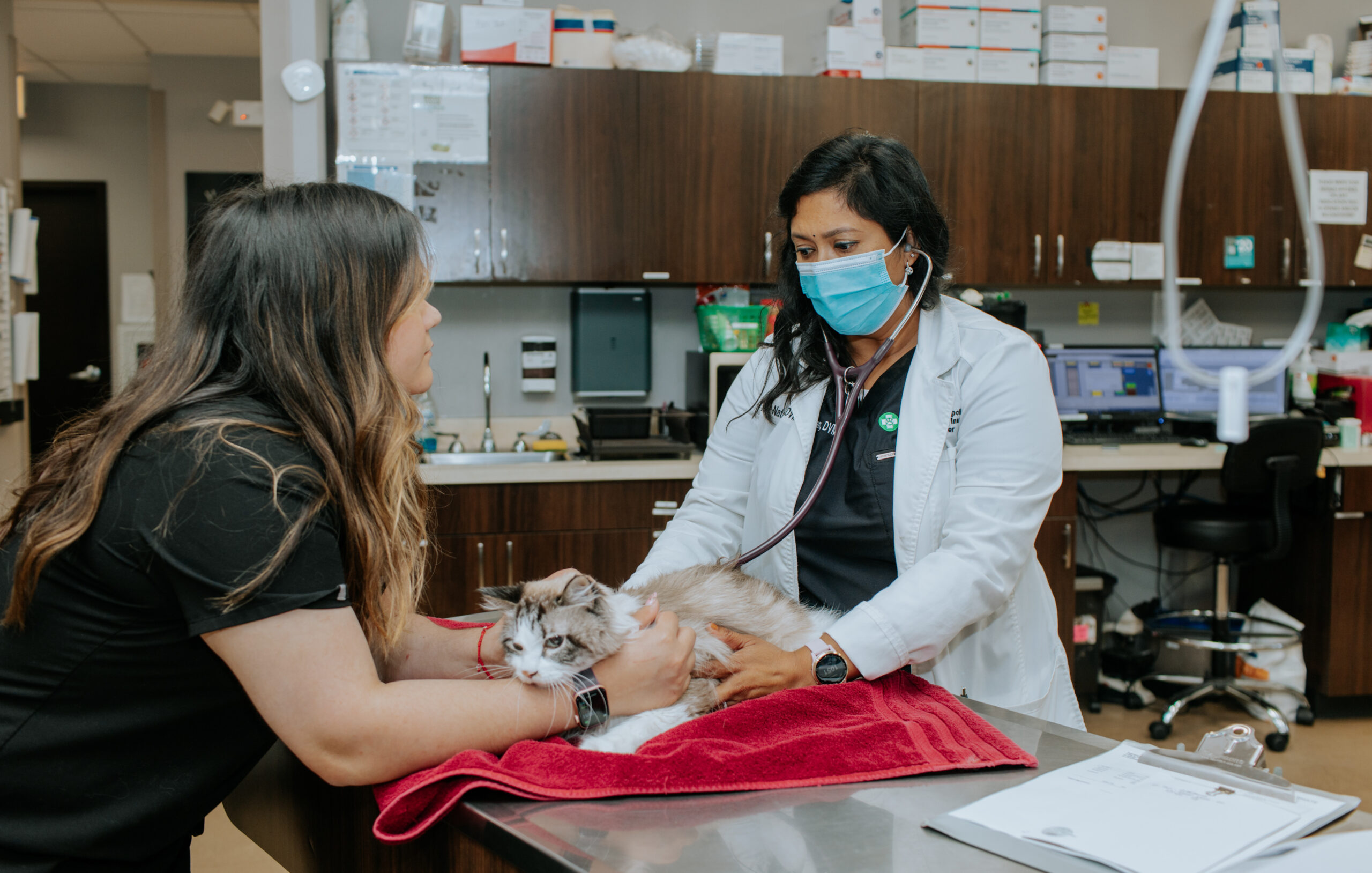When Is tplo surgery the Right Choice for Dogs With Cruciate Injuries?
Why Pet Rehab Is Critical: the Perks of Vet Services for Your Family pet's Recuperation
Pet rehabilitation is a crucial part of recovery for animals encountering injuries or impairments. Veterinary services provide critical support with customized rehabilitation strategies that deal with specific demands. These strategies commonly include discomfort monitoring, physical therapy, and nutritional support. Recognizing the numerous aspects of animal rehabilitation can illuminate its relevance in improving healing outcomes. What particular benefits do these solutions offer, and just how can they change a pet dog's healing journey?
Understanding Pet Recovery
Animal rehabilitation incorporates a variety of restorative techniques targeted at bring back the wellness and capability of injured or impaired pets. This area incorporates various techniques, including physical treatment, hydrotherapy, and work treatment, customized to fulfill the particular requirements of each pet. Recovery specialists analyze a pet's condition, developing personalized therapy strategies that might involve workouts to strengthen muscles, improve movement, and improve total health. The process not just concentrates on physical recovery yet likewise addresses emotional and behavior elements. Pets frequently experience stress and anxiety and stress and anxiety following an injury, making mental health factors to consider crucial in rehabilitation. By creating an encouraging environment, therapists can assist animals reclaim their self-confidence and adapt to their brand-new circumstances. Via routine sessions, pets can experience significant improvements, ultimately causing a far better quality of life. In general, recognizing pet recovery highlights its value in promoting recuperation and enhancing the bond between pets and their owners.
The Duty of Discomfort Monitoring in Recuperation
Exactly how vital is reliable pain monitoring in the healing of damaged pets? It plays a crucial function in promoting healing and enhancing the overall health of pets. Proper discomfort management not just alleviates discomfort however likewise advertises movement, making it possible for animals to get involved in recovery tasks necessary for healing. When pain is successfully handled, pets have a tendency to react favorably to treatment, leading to quicker rehabilitation outcomes.Veterinarians make use of various techniques to evaluate and address pain, consisting of medicines, acupuncture, and alternative therapies. By tailoring pain monitoring approaches to the individual demands of each animal, veterinarians can assure that pets continue to be tranquil and cooperative throughout their recuperation journey. Additionally, decreasing pain aids lower tension, which can inhibit healing and extend healing times. To summarize, reliable discomfort monitoring is essential for improving the recovery process and enhancing the lifestyle for injured animals.
Physical Treatment Methods for Pets
Various physical therapy methods are available to help in the rehabilitation of family pets recouping from injuries or surgical procedures (animal emergency care bellingham). These strategies can enhance wheelchair, relieve discomfort, and promote recovery. Healing workouts, as an example, help reinforce muscular tissues and boost joint feature, permitting pets to regain their physical capabilities gradually. Manual treatment, which includes massage therapy and mobilization, can reduce tension and boost blood circulation, adding to a quicker recovery.Other methods such as passive series of movement exercises urge joint adaptability and lower tightness. In addition, electric stimulation treatment might be utilized to stimulate nerves and muscle mass, advertising recovery and pain relief.Veterinary specialists commonly tailor these techniques per family pet's specific demands, guaranteeing a comprehensive rehab strategy. By implementing these physical therapy techniques, pet dogs can experience better high quality of life and an extra successful recuperation from their ailments. The assimilation of these practices into rehabilitation programs is essential for excellent recovery end results
Benefits of Hydrotherapy for Rehabilitation
Hydrotherapy supplies substantial benefits in animal rehabilitation, especially in boosting flexibility. This water-based treatment advertises discomfort alleviation while giving convenience to injured or recuperating animals. Additionally, it promotes strength-building workouts that add to overall physical recovery.
Boosted Flexibility Renovation
As animals recuperate from injuries or surgical procedures, enhanced wheelchair frequently ends up being a main objective of their rehab. Hydrotherapy functions as a useful tool in attaining this purpose. Via water-based exercises, pets can take part in low-impact activities that facilitate joint mobility and reinforce muscles without the stress and anxiety of weight-bearing tasks. The buoyancy of water supports their bodies, allowing for enhanced variety of activity and mobility improvement. Additionally, hydrotherapy motivates far better balance and sychronisation, which are necessary for restoring typical movement patterns. Regular sessions can result in considerable progression in a pet's physical capabilities, ultimately boosting their top quality of life. This strategy not only help in recuperation but also promotes a more active and meeting way of living post-rehabilitation.
Pain Relief and Convenience

Relief from pain is a vital facet of animal rehabilitation, and hydrotherapy substantially adds to this procedure. By making use of water's buoyancy, hydrotherapy minimizes joint tension and relieves pain throughout activity. This restorative method provides a comforting environment where animals can participate in gentle workouts without the complete weight of their bodies influencing their recuperation. The warm water boosts blood flow, promoting recovery while additionally motivating relaxation. Furthermore, hydrotherapy sessions can be tailored to fulfill the particular demands of the pet, guaranteeing ideal convenience. As family pets experience minimized pain and boosted convenience degrees, their overall readiness to take part in rehabilitation tasks frequently boosts, leading to a much more reliable recuperation trip. As a result, hydrotherapy acts as a vital device in enhancing discomfort relief and convenience during rehabilitation.
Stamina Building Exercises
Strength-building exercises play a crucial function in the rehab process, with hydrotherapy offering unique benefits. This kind of therapy utilizes water resistance to improve muscular tissue stamina without putting extreme pressure on the joints. The buoyancy of water supports the animal's weight, allowing for safer activity and increased series of motion. Furthermore, hydrotherapy can improve cardio health and advertise overall health and fitness, aiding in quicker recuperation from injuries or surgeries. The regulated atmosphere also lessens the danger of reinjury, making it a perfect alternative for animals calling for rehabilitation. Normal hydrotherapy sessions can cause obvious improvements in mobility, veterinary emergency hospital stamina, and endurance, eventually enhancing the animal's lifestyle and capability to return to typical activities.
Significance of Personalized Rehabilitation Plans
Personalized rehab strategies are vital for addressing the one-of-a-kind requirements of each pet, making certain personalized therapy techniques. These plans allow for efficient development tracking and required changes, fostering perfect healing results. Furthermore, a holistic approach can enhance the overall wellness of the pet, promoting a much more complete rehab experience.
Individualized Therapy Approaches
While lots of rehabilitation programs take on a one-size-fits-all approach, the one-of-a-kind requirements of each pet necessitate personalized treatment strategies for ideal recuperation. Personalized rehabilitation plans take into consideration numerous aspects, consisting of the pet's types, age, case history, and certain injuries or problems. By tailoring treatments, veterinarians can address each animal's one-of-a-kind challenges, taking full advantage of the performance of the rehab process. Individualized strategies might incorporate various methods such as physical treatment, hydrotherapy, and therapeutic workouts, ensuring that the therapy lines up with the pet's capacities and progress. Additionally, personalized approaches promote a more powerful bond in between the pet dog and the caregiver, promoting a more interesting and encouraging healing setting. Eventually, personalized treatment is vital for accomplishing finest possible results in animal rehab.
Progression Tracking and Adjustments

Holistic Healing Methods
Alternative recovery techniques are essential for efficient animal recovery, as they stress the importance of customized therapy plans customized to each animal's particular requirements. This technique thinks about the physical, emotional, and ecological factors influencing recuperation. Customized rehab plans might consist of a mix of physical therapy, dietary therapy, and behavior alterations. By addressing these varied aspects, vets can boost the general wellness of the animal and promote a faster healing. Furthermore, such tailored methods facilitate a deeper understanding of the pet's special challenges, leading to extra efficient interventions. Eventually, alternative recovery methods not only boost physical wellness but additionally add to the animal's psychological and psychological stability, making certain an extensive rehabilitation experience.
The Impact of Nutrition on Recuperation
Nutrition plays a crucial duty in the recuperation process for fixing up animals, typically identifying the speed and performance of recovery. A well-balanced diet gives the required nutrients that sustain cells fixing, boost the immune system, and boost total vitality. Protein is especially vital, as it assists in muscle restoring and healing from injuries. Necessary fats, vitamins, and minerals additionally contribute to minimizing swelling and advertising ideal mobile function.Veterinarians frequently emphasize the relevance of customized nutrition plans, thinking about each pet's specific demands, age, and health condition. Correct hydration is just as essential, as liquids promote nutrient absorption and aid in detoxification. By guaranteeing that family pets obtain ideal nutrition, caregivers can significantly enhance their chances of a successful recovery, bring about much better lasting wellness results. Eventually, nourishment functions as a foundational component in the rehab trip, sustaining animals in gaining back toughness and resilience post-injury or disease.
Success Stories: Pets That Grew After Recovery
Successful recovery tales abound, showcasing the strength of pet dogs who have actually gotten over considerable challenges. Take, for example, Bella, a gold retriever who suffered extreme injuries from an automobile accident. With dedicated veterinary care and a comprehensive dvm vet rehab program, she regained her mobility and went back to her lively self, much to her owner's delight. In a similar way, Max, an elderly cat diagnosed with joint inflammation, experienced remarkable renovation with a mix of physical treatment and pain administration. His newly found agility allowed him to appreciate his preferred sunbathing areas once again. Another motivating instance is that of Coco, a saved greyhound that conquered anxiousness through therapy and socialization methods, allowing her to thrive content in her new home. These success stories exemplify the transformative power of pet recovery, emphasizing that with the ideal assistance, animals can not only recoup but lead meeting lives, improving the bonds they show to their households.
Often Asked Concerns
The length of time Does the Rehabilitation Process Usually Take for Pets?
The recovery process for pets normally differs based upon the injury or condition, varying from a couple of weeks to a number of months. Private progress, therapy type, and dedication to exercises substantially influence the total duration of recovery.
Exist Any Kind Of Threats Connected With Pet Rehab?
Animal rehabilitation might lug dangers such as exacerbation of injuries, incorrect strategies causing discomfort, or insufficient monitoring during recovery. These aspects can hinder development and impact the total efficiency of the recovery process.

Can All Pets Gain From Rehab Solutions?
Not all pets might need rehabilitation, yet many can benefit substantially. Recovery services can boost mobility, ease discomfort, and boost general health, especially for those recouping from injuries, surgeries, or chronic problems.
Just How Can I Prepare My Animal for Rehabilitation Procedure?

What Signs Show My Family Pet Demands Recovery?
Indicators suggesting an animal may need recovery consist of problem strolling, hopping, decreased activity degrees, unwillingness to jump, or indications of pain. Observing these habits can motivate proprietors to look for specialist assessment and treatment for their pet dogs.